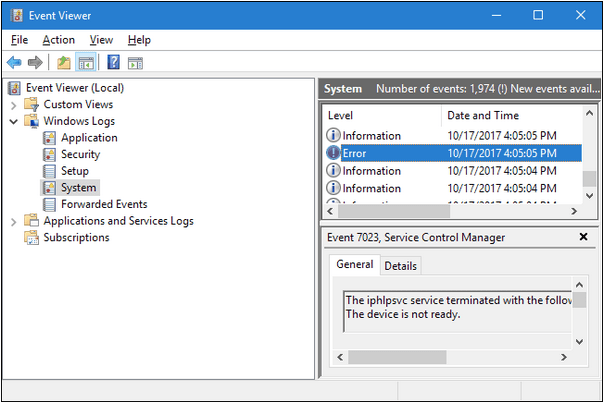Windows 10 is the most popular and commonly used OS, which holds a majority of market share. Now and then, Microsoft keeps rolling out new updates for Windows to make it more efficient and secure.
Have you ever heard of the Windows Event Viewer? It is a useful utility tool that comes along with Windows OS that records and stores information about what all is happening on your device.
In this post, we have covered everything you need to know about what is Windows Event Viewer, how to use it, and why is it required.
Also read: How To Find Who Logged Into Your Computer And When
Let’s dive in.
What is the Windows Event Viewer?

For those of you who’re not aware, Windows Event Viewer is an administrative utility offered by Windows that allows you to view events, errors, and other related Windows information in a nutshell. The Windows Event Viewer is a crucial part of the operating system and comes in-built with almost all Windows versions.
It’s a hood that keeps a record of all the information and events that are happening on your Windows system. Windows Event Viewer also allows you to keep track of errors, warnings, and other significant events that may potentially cause failure or malfunctioning on your device. So, if any recent changes have been made on your device, Windows Event Viewer will log all the related information that you can assess anytime. If you’re dealing with Windows errors or specific issues, Windows Event Viewer can prove out to be of great help to you.
Once you attain basic knowledge about how the Windows Event Viewer works, you can quickly get to know about your system in-depth about what all is happening in the background. Now, let’s proceed and learn how to use the Windows Event Viewer tool on Windows 10 PC.
How to Use the Windows Event Viewer?
To launch the Windows Event Viewer on your device, follow these steps:
Fire up the Start menu search, and type “Event Viewer” in the textbox. Hit Enter.

Once the Event Viewer window opens up, you will see a variety of events in the left menu pane listed under various categories and sub-categories.

Now here’s something you should know. As soon as you start assessing the Event Viewer, you will see a couple of error messages and warnings listed under various heads. No matter, even if your device is working properly, these error messages might have occurred and resolved in the background. So, there’s nothing to panic!
Why is it Important?
Windows Event Viewer may not feel so required daily, but yes, it is an integral part of the Windows OS, especially when you’re troubleshooting a specific error or issue. The Event Viewer window can help you to reach the main cause by listing useful information about a specific event that took place in the background.
 There are a lot of common Windows issues like system crash, error messages, blue screen of death, hardware driver failure, and more that you might have to deal with while using your Windows machine. With the help of the Windows Event Viewer, you can know your system better and make an accurate analysis of what all events or changes took place recently.
There are a lot of common Windows issues like system crash, error messages, blue screen of death, hardware driver failure, and more that you might have to deal with while using your Windows machine. With the help of the Windows Event Viewer, you can know your system better and make an accurate analysis of what all events or changes took place recently.
Apart from this, Windows Event Viewer also keeps a record of the exact boot time of your device. You can access this information to fix boot and start-up issues on your device. Every piece of information that is recorded by the Event Viewer is tagged under a unique event ID.
So, folks, that was all on how to use the Event Viewer on a Windows 10 machine. We hope you will make the most of this tool for tracking and fixing common Windows errors and issues.


 Subscribe Now & Never Miss The Latest Tech Updates!
Subscribe Now & Never Miss The Latest Tech Updates!
Mansi Vijay
Hey, How can I view all the potential Windows application errors using Window Event Viewer?